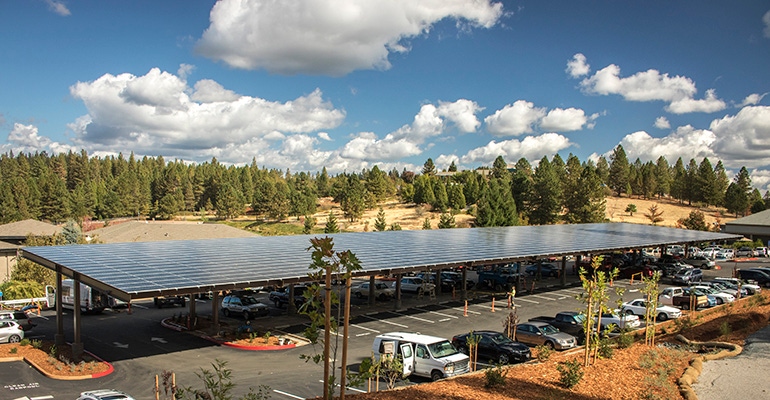Ready to go solar? Before you make the big move, consider these pointers from BriarPatch Co-op’s solar project.

In 2016, BriarPatch Food Co-op expanded its parking lot to include a steel structure holding 680 solar panels. The goal? To produce as much as 55% of the store’s electricity needs, reduce annual utility costs by $75,000, and achieve a $3 million savings over the panels’ 25-year lifespan. Today, says facilities manager Dave Thomas, the panels are on track to deliver their return on investment even sooner than the original five-year estimate.
That isn’t to say the process has been perfect. Here are three lessons BriarPatch leadership has learned about integrating solar into a store’s energy plan.
1. Parking: It's more complicated than it seems
For stores designing a solar parking structure, as BriarPatch did, the hope is to provide covered and shaded parking for shoppers. “While the solar array creates a tremendous amount of shaded parking in the summer,” says Thomas, “it has a less than desirable amount of water that drains down through when it rains.” So while the structure was never designed to be water tight, the run-off can be a nuisance -- especially if shoppers expect protection during the rain. The store is currently working with their solar provider on solutions.
2. Getting the word out is important
At BriarPatch, shoppers benefit from a large-screen monitor located inside the store, which tracks exactly how much electricity the panels are producing in real time. “Our shoppers love the panels,” says general manager Chris Maher. “They are a highly visible reminder of the co-op’s commitment to sustainability and the impact of their own shopping dollar. They are proud that their co-op is a leader in the community showing the way for others to follow.”
3. Fiscal planning is key
One major lesson that Maher learned during the earlier years of this program is that co-ops aren’t able to carry their tax credit forward over multiple years. “They have to be able to make use of it in the year in which the array was completed and activated,” he added, which requires planning ahead.
About the Author(s)
You May Also Like


